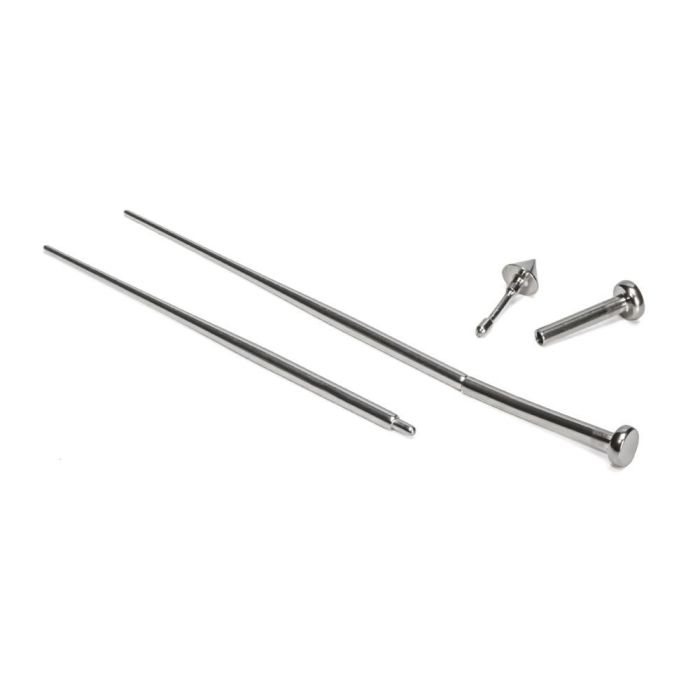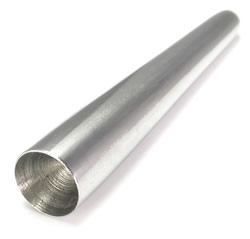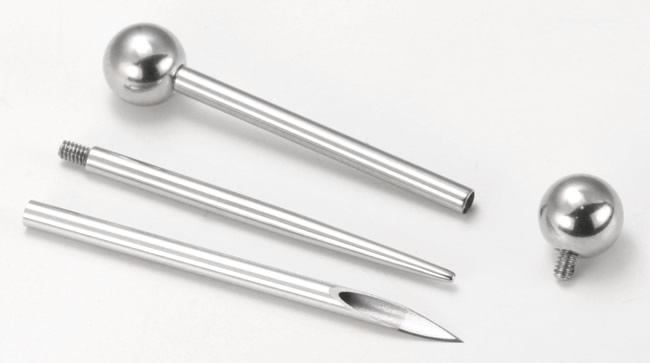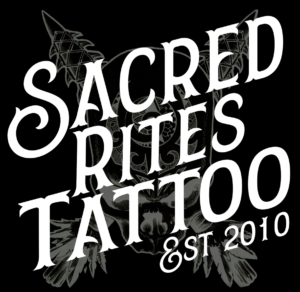First things first. What is a taper? More than likely, you’ve seen someone walking around the mall with a large piece of plastic resembling a carrot sticking out of their ear. They should gently taper from one size to another. (Hence the name)

*This is the most common way most people will see a taper*
The Tapers you see above often purchased at hot topic and are not something we recommend. Lots of people tend to wear them around and slowly slide the backing to slow down the stretch but again we really don’t recommend this.
The tapers we use in a professional atmosphere are much longer and have a gradual change in size. The big fat tapers have a very small gap between sizes which can dramatically damage or blow out a healthy ear lobe. They are also made of porous materials. Acrylic materials like those can harvest bacteria. Professionals use steel or titanium tapers that are autoclavable (we can sterilize them) and have a smooth mirror finish free from any toxins. Acrylic jewelry is porous, and often turns colors and yellows with extended wear, it also harbors bacteria, dirt and oils, and dead skin cells. Acrylic plugs are notorious for smelling quite unpleasant when worn for any length of time. A lot of people are extremely sensitive to acrylic. It’s cheap for a reason!
Tapers are a useful tool to either help us guide jewelry into a fresh or healed piercing and in some cases stretch piercings.
Tapers are made 3 different ways, with either a threadless pin on the end which locks into threadless jewelry, a threaded piece on the end which screws into threaded jewelry, or with a concave back sometimes called a coupling back which you just press jewelry up against. With these you can insert them to the jewelry the same way the jewelry closes, making it a smooth transition to swap a piece of jewelry in and out. These are also helpful to insert jewelry in crooked lobe piercings that clients struggle to put jewelry in normally. As piercers, we use these when working on unhealed piercings as well to ensure we don’t cause trauma to the healing fistula when we need to downsize or work with jewelry.
There are 3 different designs for tapers.
- The Taper has a threadless pin on the end which locks into threadless jewelry.

- The taper will have a concave back or a “coupling back” which you press directly against the jewelry.

- The taper will be threaded which allows you to attach it to threaded jewelry.

Each is designed differently to accommodate the style of jewelry you have or choose and to ensure a smooth transition. These are particularly great for piercers as we can swap out jewelry on a piercing that isn’t quite healed without damaging the healing fistula. It also lets us transition with ease when we are working with piercings that may be crooked.
Tapers for stretching…
You will often hear us say this is a no no. But truth is sometimes we have to use them for these purposes. Misuse is extremely common. *See the picture above*
When we talk about using this as a tool for stretching, that depends on the nature of the stretch itself.
When it comes to stretching ear lobes, we really do not recommend this method. Lobes naturally loosen over time. The process should be taken slowly and with some genuine TLC.
When we refer to stretching piercings, it’s typically areas like cartilage, septum’s, or even genital piercings that sometimes need a little extra assistance due to the types of tissue. Typically, the jewelry worn in these areas is installed easier with a taper as well.
In the next blog we will be going in depth on stretching your ears properly!
